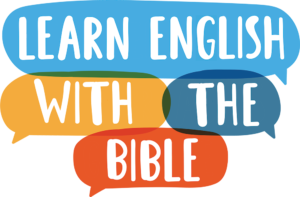
Study Rhyming Words to Make Spelling Easier
This is the last article in our 5-part series on how to teach English spelling. Click here to read the main article.
Why Should I Teach Rhyme?
Rhyming has great value for your students, whether they are adults or children. Rhyming helps learners focus on how language works as they begin to dissect words and notice the individual sounds in each word. Seeing the word written and hearing it pronounced is an important step toward successful English spelling.
In this article, we’ll talk about how rhyming patterns and spelling patterns can be taught together, how to introduce new vocabulary with rhyming patterns, and how to incorporate the Bible into rhyming lessons. At the end, discover a bonus skill that your students can improve by practicing rhyme.
Rhyme Is Useful for Many English Skills
Besides being fun and an important step to successful spelling, rhyming can help with many other skills associated with language, like listening, reading, vocabulary, and pronunciation. Understanding rhyme and the sounds that make it possible will help your students be better readers and spellers.
Rhyming Is the Last Prerequisite Skill
In our introductory article, we listed the four skills your learners should have before you teach them the patterns of spelling:
1. Know the alphabet sequence and how to alphabetize words
2. Phonics – be able to hear and produce each English sound
3. Understand and practice syllables
4. Understand how words rhyme and hear rhyming patterns
If your students are ready to learn rhyming patterns, it’s really easy to incorporate rhyming and spelling patterns together.
Rhyming and Spelling Patterns
Introducing New Vocabulary
As you introduce new vocabulary, you can create lists of words that belong to a particular spelling pattern.
For Young Students and Beginners
For example, with younger students or beginners, you could choose the spelling pattern that ends in -at. Make a list of words (with pictures if possible) like cat, hat, sat, etc. Let them add new sounds to the list and write down the suggestions that make real words. By doing this, you are teaching both a spelling pattern and a rhyming pattern.
For Visual Learners and Intermediate Students
For more visual learners, write the rhyming pattern on slips of paper. Write other individual letters and diphthongs (depending on the level of your learners, like th and st), on other slips of paper. Learners can take time mixing and matching the individual letter sounds with the spelling patterns, making real words and also nonsense words.
For More Advanced Students
With older or higher-level students, you can also introduce more complicated rhyming sounds and spelling patterns, like -ane (long a/consonant n/silent e). You can include words like mane, drain, reign, etc. Letting them help you add to the list by making up rhyming words with the -ane sound will be a fun way for you to introduce even more vocabulary.
How Can I Use the Bible for Rhyming Lessons?
It might be difficult to use regular Bible passages and verses to teach rhyme. One resource I recommend is The Rhyme Bible Storybook, by L. J. Sattgast. It contains Bible stories told in short rhymes. Choose the rhyming/spelling pattern you want to teach, and then find the Bible story that contains that pattern. Or, choose the story you want to use, then teach the pattern contained in that story.
An Example from The Rhyme Bible Storybook
For example, if I wanted to teach the -ay pattern, here is a portion of the book’s text from Genesis that contains this pattern.
“Adam and Eve
Were glad to obey.
They lived in the garden
Day after day.” 1
You could read the text to your learners and do one of several activities.
- Young learners could jump to their feet when they hear a word that conforms to the day’s pattern.
- Older learners could raise their hands and repeat back to you the rhyming words they heard.
- You could also write a list of the rhyming words from the passage on the board, and create a worksheet with the text minus several of the words for students to fill in the blanks.
Rhymes = Fun Classroom Activities
Reading these rhyming texts to your students can be a great classroom activity. You can also use these texts to create entire lessons for your younger learners, since the texts contain easy vocabulary and grammar.
Repeating simple poetry can also reinforce intonation and stress patterns better than songs, where the intonation and stress can be altered by the rhythm of the music.
And don’t forget the added benefit of a rhyme sticking in your head! I can picture a student waking up in the morning with “Adam and Eve were glad to obey…” looping endlessly through their mind.
Value of Rhymes and Poetry for Adult Learners
I once heard a conference presenter recommend the great idea of using picture books to teach middle and high school students, especially with science topics. Also, I enjoy reading picture books myself. In the same way, don’t be afraid to use children’s materials with your beginning and intermediate adult learners.
Why? Children’s materials contain the reading, listening, and speaking levels of your beginners. Using them with adult beginners can make students feel less intimidated, though some of your more serious students may protest.
Of course, as your students progress, they will need to be exposed to the kind of material they need to use as adults, but letting them start with easy children’s material can give them an easy and fun introduction to basic English skills.
Bonus Pronunciation Practice!
Here’s the bonus skill I mentioned at the beginning of this post – rhymes can help with pronunciation!
Practicing words that rhyme and reading poetry can help students who are having difficulty pronouncing certain sounds. The repetitive nature of rhymes can help reinforce the sound you are teaching in a particular lesson.
You can also employ simple more secular tongue twisters, like “Peter Piper picked a peck of pickled peppers,” for a fun pronunciation exercise guaranteed to bring a smile to your students as they see you try your best to show them how to say it. Try this link for more tongue twister ideas.
Conclusion
Try using rhymes from The Rhyme Bible Storybook and other books of Bible rhymes to teach spelling and a myriad of other important ESL skills. Children as well as adults will progress rapidly by learning the rhyming and spelling patterns of English words.
Purchase The Rhyme Bible Storybook here at amazon.com. I love this book! At the time of this writing, The Rhyme Bible Storybook is available on Amazon in hardcover for $12.00, 48% off the list price of 22.99. (As an Amazon Associate, I earn from qualifying purchases, but your purchase price remains the same.)
1 Sattgast, L. J. The Rhyme Bible Storybook. Grand Rapids: Zonderkidz, 1996.
